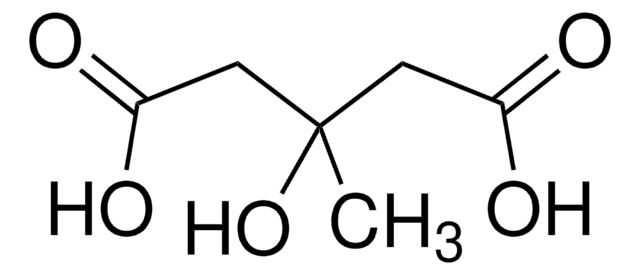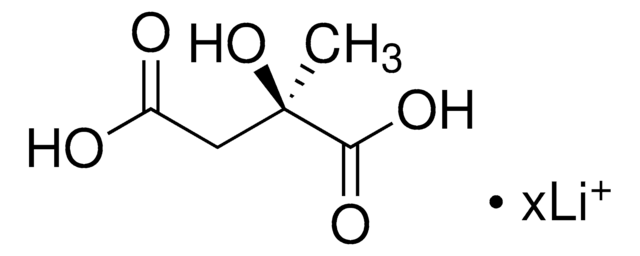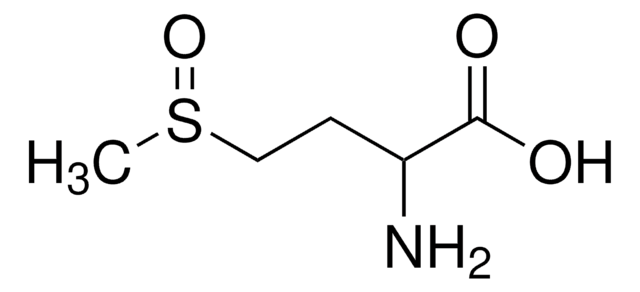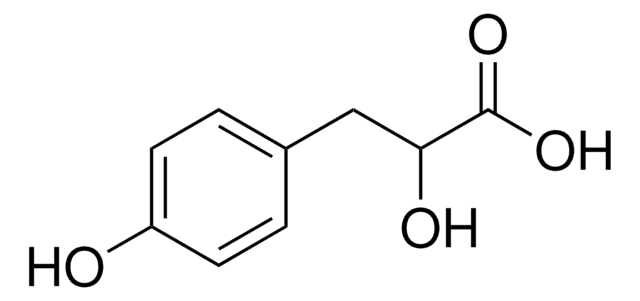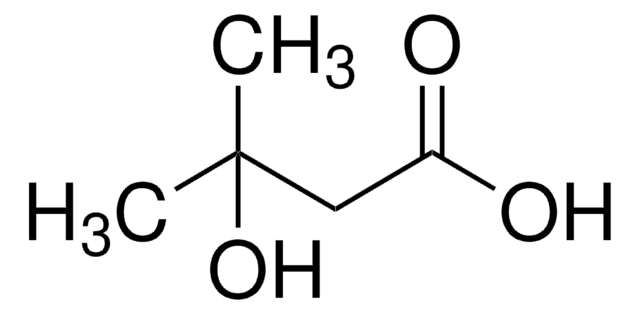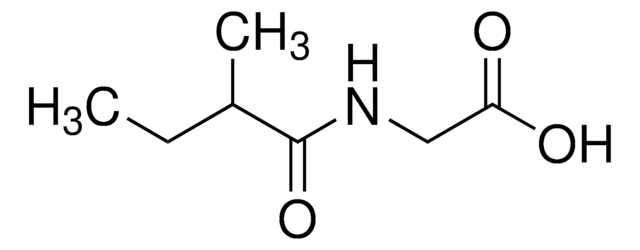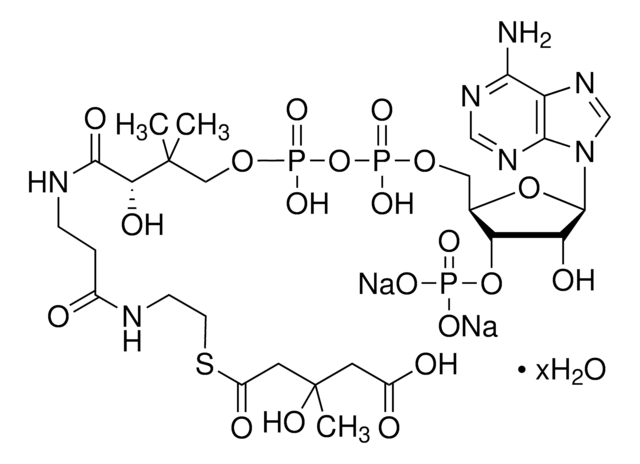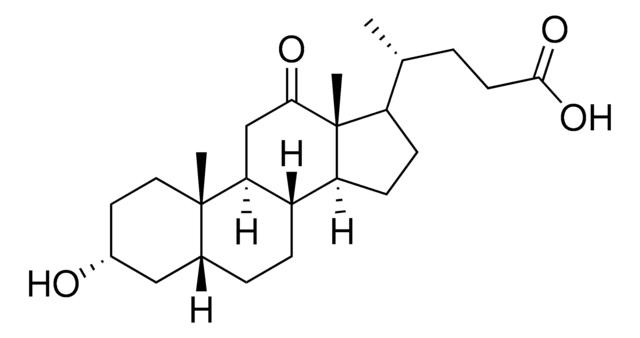所有图片(1)
About This Item
经验公式(希尔记法):
C6H8O4
CAS号:
分子量:
144.13
Beilstein:
1722909
MDL编号:
UNSPSC代码:
41116107
PubChem化学物质编号:
NACRES:
NA.24
推荐产品
质量水平
方案
≥97.0% (HPLC)
mp
137-143 °C
应用
clinical testing
包装形式
neat
储存温度
2-8°C
SMILES字符串
OC(=O)C\C(=C\C(=O)O)\C
InChI
1S/C6H8O4/c1-4(2-5(7)8)3-6(9)10/h2H,3H2,1H3,(H,7,8)(H,9,10)/b4-2+
InChI key
WKRBKYFIJPGYQC-DUXPYHPUSA-N
相关类别
生化/生理作用
3-Methylglutaconic aciduria (MGCA) is a group of metabolic disorders characterized by increased urinary excretion of 3-methylglutaconic acid and 3-methylglutaric acid. Five distinct forms of MGCA have been recognized. MGCA type 1 is caused by primary deficiency of the mitochondrial enzyme 3-methylglutaconyl-CoA hydratase (3-MGCH), resulting in a block of leucine degradation. In all other types, the activities of 3-MGCH and other enzymes of leucine degradation are normal and the MGCA is thought to be secondary to a defect in another pathway. MGCA type 2, also known as Barth syndrome, is an X-linked cardiomyopathy associated with skeletal myopathy, neutropenia, and growth retardation. MGCA type 3, also referred to as Costeff optic atrophy syndrome, is an autosomal recessive disorder caused by mutations in the gene OPA3. It is characterized by early-onset bilateral optic atrophy, later-onset extrapyramidal dysfunction. MGCA type 5 caused by mutation in the DNAJC19 gene, is characterized by early-onset dilated cardiomyopathy with conduction defects, nonprogressive cerebellar ataxia, testicular dysgenesis, and growth failure. MGCA type 4 is the unclassified type, which includes all other patients with MGCA.
警示用语:
Warning
危险声明
危险分类
Eye Irrit. 2 - Skin Irrit. 2
储存分类代码
11 - Combustible Solids
WGK
WGK 3
闪点(°F)
Not applicable
闪点(°C)
Not applicable
Rebecca Young et al.
Biochemical and biophysical research communications, 534, 261-265 (2020-12-08)
3-methylglutaconic (3MGC) aciduria is associated with a growing number of discrete inborn errors of metabolism. Herein, an antibody-based approach to detection/quantitation of 3MGC acid has been pursued. When trans-3MGC acid conjugated keyhole limpet hemocyanin (KLH) was inoculated into rabbits a
M Duran et al.
Biomedical mass spectrometry, 9(1), 1-5 (1982-01-01)
The identification of (E)-2-methylglutaconic acid, a 'new' metabolite of isoleucine, is described. The substance was detected in urine samples from patients with propionic acidaemia, methylmalonic acidaemia and so-called beta-ketothiolase deficiency; in the majority of cases together with N-tiglylglycine. (E)-2-Methylglutaconic acid
Solution of a classical problem. Tautomerism and isomerism in the α-methylglutaconic acid series
Kagan, J., et al.
The Journal of Organic Chemistry, 40, 3085-3093 (1975)
M Fontaine et al.
Clinica chimica acta; international journal of clinical chemistry, 255(1), 67-83 (1996-11-15)
We report clinical and biological investigations in two patients (twin brothers) with 2-methylacetoacetyl-CoA thiolase deficiency. Main clinical features included important staturo-ponderal delay, frequent infectious rhinopharyngitis episodes and an acute metabolic acidosis at the age of 4 years, this metabolic decompensation
Metabolic profiling of urinary organic acids by single and multicolumn capillary gas chromatography.
M F Lefevere et al.
Journal of chromatographic science, 27(1), 23-29 (1989-01-01)
High-resolution gas chromatography (HRGC) and gas chromatography/mass spectrometry (GC/MS) are the techniques of choice to determine the retention indices of more than 200 organic acids as their trimethylsilyl (TMS) or oxime-trimethylsilyl derivatives. Several types of apolar and semipolar fused-silica capillary
我们的科学家团队拥有各种研究领域经验,包括生命科学、材料科学、化学合成、色谱、分析及许多其他领域.
联系技术服务部门